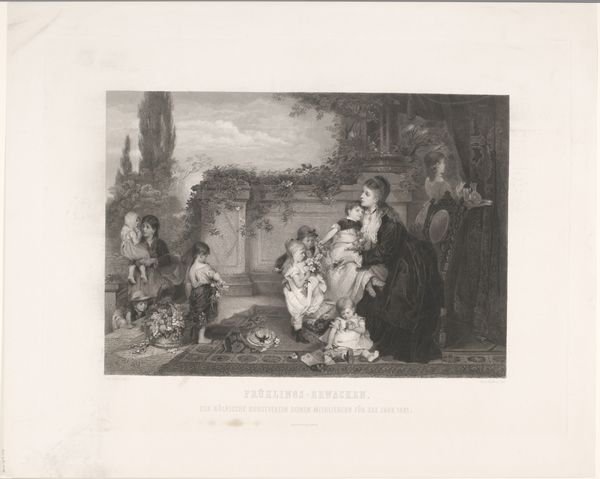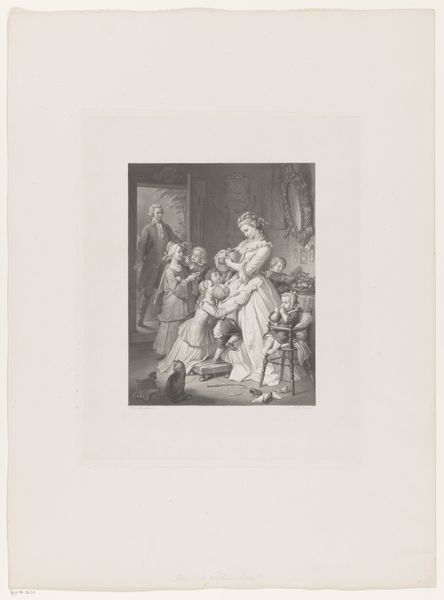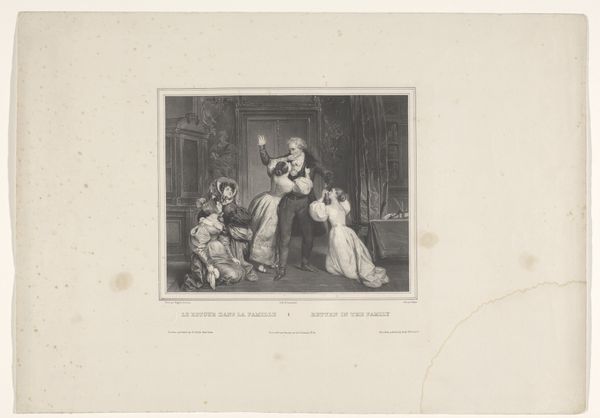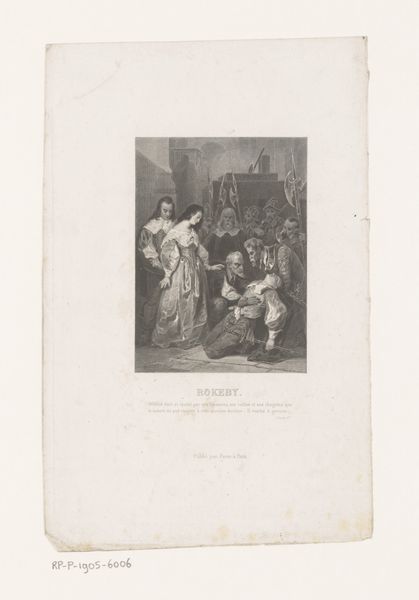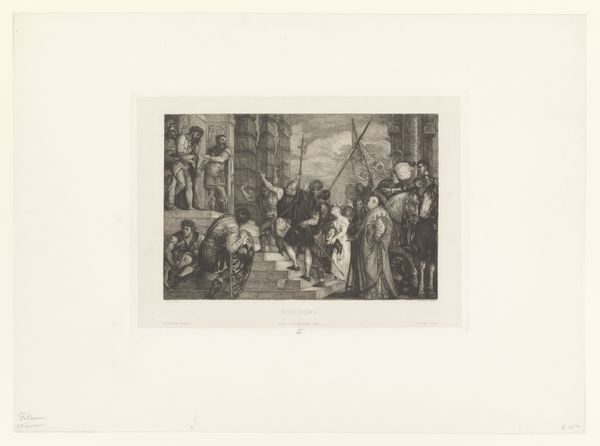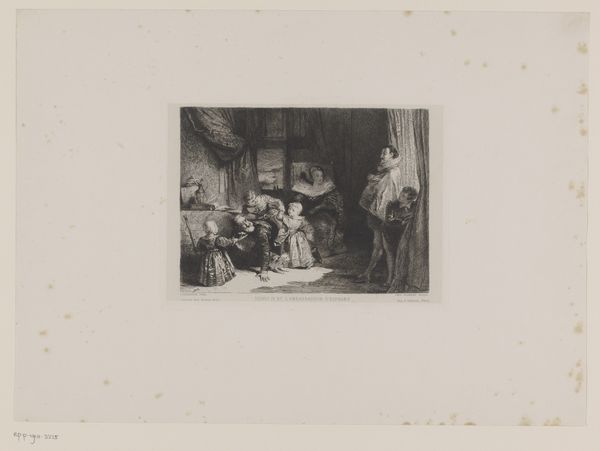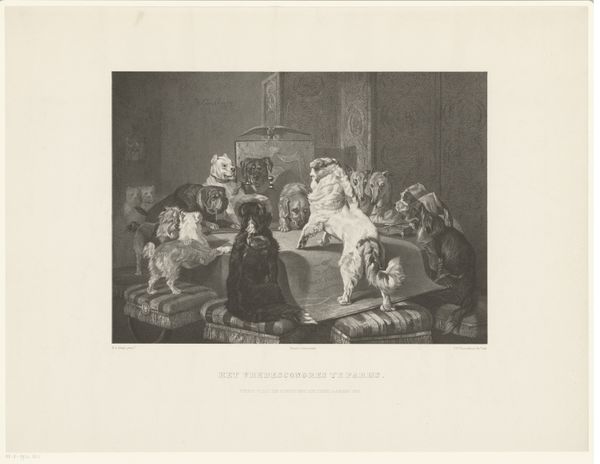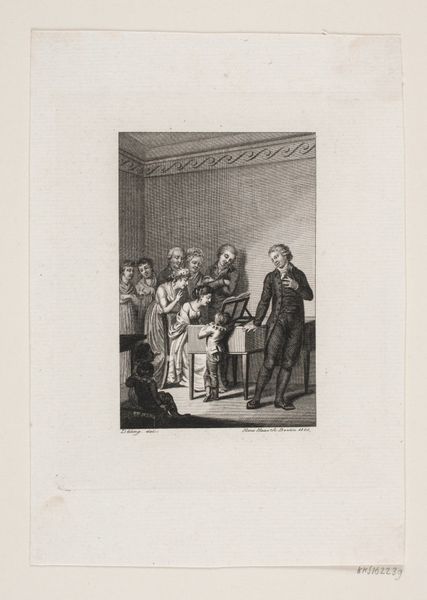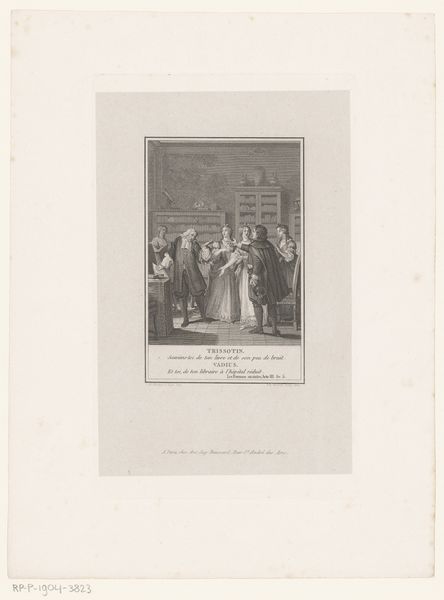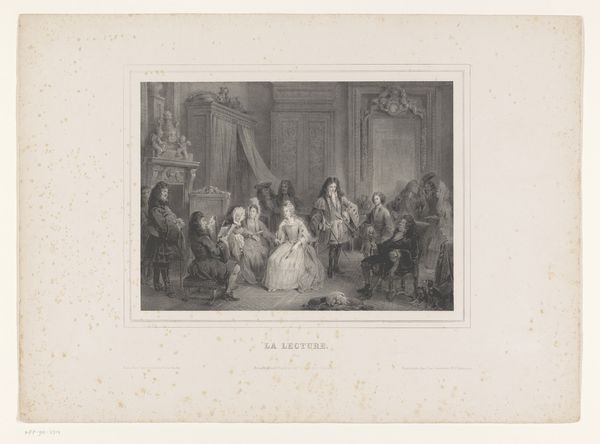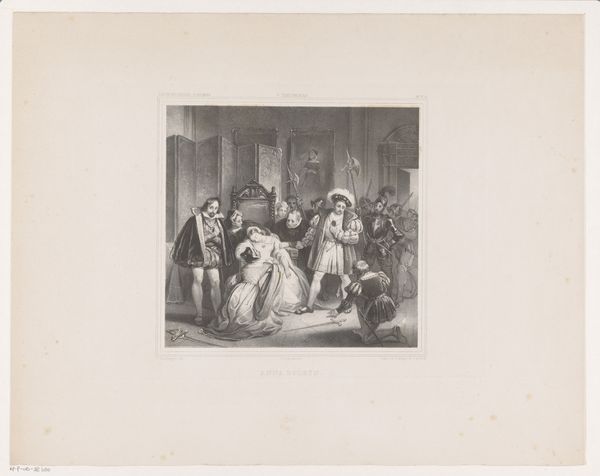
Dimensions: height 189 mm, width 248 mm
Copyright: Rijks Museum: Open Domain
Editor: This is William Unger's print, "Petrus in het huis van Cornelius," created sometime between 1847 and 1889. It's an engraving. I'm struck by how everyone is arranged in such neat rows and the contrast between the dark figures and that intense light coming from the back. How do you interpret this work in the context of its time? Curator: I see this engraving as deeply embedded in 19th-century societal power structures and the persistent influence of religious narratives. Unger’s choice to depict this biblical scene, Peter's encounter with Cornelius, speaks to the era's obsession with establishing social hierarchies and moral codes, doesn’t it? Look at who is kneeling. Who has the position of power? Editor: I hadn’t thought of it that way. It’s almost like a stage production with very deliberate positioning of people. Why do you call it an obsession? Curator: Because these religious depictions weren’t just innocent stories. They reinforced dominant ideologies about race, class, and gender. Peter, likely envisioned as white, bestowing "enlightenment" upon Cornelius’s household is fraught with colonial undertones. Unger lived in a time of growing social consciousness; do you see the scene mirroring a sense of obligation towards those considered "less civilized?" Editor: Yes, I see it now. It feels less like a divine encounter and more like a power dynamic being illustrated. Are we supposed to interpret Cornelius’s family as subjects accepting conversion? Curator: Exactly. Now consider how Unger's choice of engraving as a medium made this narrative accessible to a wider audience. He shaped public opinion, consciously or not. What is the impact of seeing it not as art, but propaganda? Editor: That really changes things! Seeing the work as a commentary on power is much more compelling than viewing it simply as a religious scene. Thanks, that was eye opening! Curator: Indeed. Art serves as a powerful mirror, reflecting not just beauty, but also the complexities and contradictions of our shared history. And hopefully inspiring change!
Comments
No comments
Be the first to comment and join the conversation on the ultimate creative platform.
